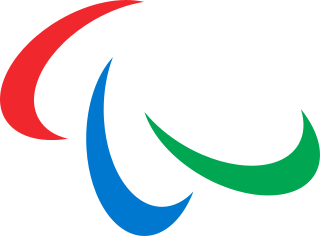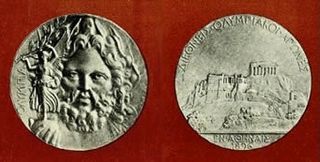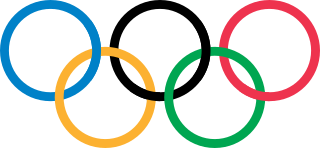Summer Olympic torch designs
| Games | Host | Design | Designer(s) | Manufacturer | Length (cm) | Weight (g) | Numbers produced | Image | Ref |
|---|---|---|---|---|---|---|---|---|---|
| 1936 | Berlin, Germany | Walter Lemcke and Peter Wolf | Friedrich Krupp AG | 27 | 450 | 3,840 |  | [1] | |
| 1948 | London, Great Britain | Ralph Lavers | 47 | 960 | 1,688 [a] |  | [2] | ||
| 1952 | Helsinki, Finland | Aukusti Tuhka | Kultakeskus Oy, Hämeenlinna | 60 | 600 | 22 |  | [3] | |
| 1956 | Melbourne, Australia | Ralph Lavers | 47 | 960 | 400 [a] |  | [4] | ||
| 1960 | Rome, Italy | The torch was designed to bring back the traditions of the antique torches of Ancient Rome. It was made from aluminum and covered with bronze. Weighing a total of 580 grams, it was one of the lightest torches. | Pier Luigi Nervi and Amedeo Maiuri | Curtisa, Bologna | 40 | 580 | c. 1,500 |  | [5] |
| 1964 | Tokyo, Japan | The minimalistic design of the torch was dedicated to the trends which were in fashion in the sixties. With a handle separated from the 'shaft' of the torch by a round sword, it resembled a fencing sword. | Sori Yanagi | 64.5 | 836 | 5,244 |  | [6] [7] | |
| 1968 | Mexico City, Mexico | The torch resembles a potato masher with the words Mexico 68 on the top. The size of this torch was all of 52 cm. | James Metcalfe | 52.3 | 780 | 3,000 [b] |   | [8] | |
| 1972 | Munich, Germany | The Olympic rings with the text "'München 1972 Spiele der XX. Olympiade'" on the handle. The logo on the upper surface of the plate. The entire surface of the torch is completely nickel-plated. It resembles a top and a sword. The logo represents the sun, the moon and the stars. A liquid gas was used for the burning. | Hagri Kettwig | Friedrich Krupp AG | 75 | 1350 | 5,917 |  | [9] |
| 1976 | Montreal, Canada | The torch was primarily made of aluminium and weighed 836 grams. It was fuelled by olive oil in part to further strengthen the link to the Greek origins of the events. This torch resembles a microphone. The holes represents the aboriginals of Canada. Red represents Canada and the ethnic groups of the country. | Georges Huel and Michel Daillaire | Queensway Machine Products | 66 | 836 | 1,250 [c] |  | [10] |
| 1980 | Moscow, Soviet Union | The Olympic torch resembles a comet. The colors represents the four seasons. White represents the Autumn and Winter. Gold represents Spring and Summer. It has the words Москва-Олимпиада-80 on the white and the logo on the golden protective cover. Eventually the torch was "polished". In the USSR, a patent of invention was registered for the torch with the number 729414. | Boris Tutschin | Leningrad Department of the Ministry of Aircraft Production | 56.5 | 700 | 5,000 [a] |  | [11] |
| 1984 | Los Angeles, U.S. | It resembles a blueprint. Etched on the ring of the torch were the words of the Olympic motto ("Citius, Altius, Fortius") with the Olympic rings between each word. It features the plaque of the Los Angeles Memorial Coliseum and the 1932 Summer Olympics Cauldron who was being lited again. | Turner Industries | 56.5 | 1,000 | 4,500 |  | [12] | |
| 1988 | Seoul, South Korea | The design of the torch, engraved with two dragons symbolizing the harmony of East and West. Korean traditions were taken into account in the making of the entire external appearance of the torch. The unique character of the torch is in the leather sheath of the handle. | Lee Woo-Sung | Korea Explosive Co. Ltd (Hanwha Corporation) | 50.5 | 1,000 | 3,300 |  | [13] |
| 1992 | Barcelona, Spain | It resembles a flower pot and a cauldron. It has the words XXV Olimpiada Barcelona 1992 and the logo. | André Ricard Sala | Kromschröder | 68 | 1,200 | 9,444 [d] |  | [14] |
| 1996 | Atlanta, U.S. | It resembles a Greek column. It features 22 aluminum "reeds" intended to represent the number of times that the Games had been held. A gold-plated band towards the base of the torch features the names of all 20 host cities up to and including Atlanta while the logo is etched into another band near the top. The handle, made of Georgia hardwood, is found near the center of the 76 centimetres (30 in) torch. | Peter Mastrogiannis, Malcolm Grear Designers | 76 | 1,600 | 17,000 |  | [15] | |
| 2000 | Sydney, Australia | The design of the Olympic and torch reflected three famed areas of Australian culture: the boomerang, the Sydney Opera House, and the waters of the Indian and the Pacific Oceans. The concept also reflected the elements of earth, fire, and water. | Robert Jurgens | G.A. & L Harrington Pty Ltd. | 72 | 1,000 | 13,000 (est.) |  | [16] |
| 2004 | Athens, Greece | The torch was inspired by an olive tree leaf. The design was selected to enhance the flame with its upward dynamic shape. Its ergonomic curved design establishes the torch as the continuation of the flame, which in turn rises as a continuation of the torchbearer's hand. It is made of metal (magnesium) and wood (olive tree). It also represents the fire seemed to come straight from the torchbearer's hand. | Andreas Varotsos | G.A. & L Harrington Pty Ltd. | 68 | 700 | 14,000 (est) |  | [17] |
| 2008 | Beijing, China | It is based on traditional scrolls and uses a traditional Chinese design known as "Lucky Cloud". It designed in reference to the traditional Chinese concept of the five elements that make up the entire universe. Red is the traditional color of China. It references the yin and yang. The top of the torches represents the rivers, lakes, waterfalls, the Four Seas and the ocean of China. The bottom of the torches represents the people, animals, forests, mountains, deserts, buildings, cities, towns and villages of China. The logo is on the center of the torch. The clouds represents the ethnic minorities of the host country. It has the words Beijing 2008 on the red/maroon bottom. | A team from Lenovo Group, public Company, Beijing | Vatti Corporation Ltd | 72 | 980 | 26,440 |  | [18] |
| 2012 | London, United Kingdom | The 2012 Olympic Torch ismade of aluminum alloy skin, perforated by 8,000 circles to represent the 8,000 torchbearers who would carry the flame. The circles also helped to dissipate heat without it being conducted down the handle, and provided extra grip. The triangular shape of torches represents the three Olympic values (respect, excellence and friendship), elements of the Olympic motto – faster, higher, stronger, Olympic Games hosted by the United Kingdom (1908, 1948 and 2012), tri-vision of the 2012 Summer Olympics (sport, education and culture). The Olympic torch is gold. | Edward Barber and Jay Osgerby | Premier Group | 80 | 800 without canister 1,090 with canister | 8,750 |  | [19] |
| 2016 | Rio de Janeiro, Brazil | When the white torch is lit (according to the creators, known as the "kiss"), Its segments will open up. The segments come from the elements of the Brazilian flair and the host city's nature represent with the colors of the host nation's flag. The golden triangle on the top of the torch represents the three Olympic values (respect, excellence and friendship) and the achievement of the games and the sun. The green represents nature surrounding the host city. The aquamarine represents the waters surrounding the host nation and the host city. The blue represents the sea. The light blue and the shape of the segments represents the esplanades (Calçadão in Portuguese) of Copacabana and Ipanema. The axis of the torch expresses unity and diversity. | Chelles & Hayashi | Recam Laser | 69 | 1,500 | 12,000 |  | |
| 2020 | Tokyo, Japan | The torch is made from a single sheet of medal and recycled aluminum and on top is a shape an iconic Japanese cherry blossom (sakura) flower designed to bring the Japanese people together around messages of support, acceptance and encouragement of one another, while also reflecting the Olympic flame's ability to promote peace and hope to the world. The body of the torch features five cylinders that represent petals of the beloved flower. Flames are generated from each “petal”, which are united in the centre of the torch, lighting the way with greater brilliance. A number of technological innovations are deployed in the combustion section that lights the torch, including catalytic reaction. Further building on this spirit of innovation, the torch's unique shape is made possible by utilising the same modern aluminium extrusion technology used in the manufacturing of Japan's renowned bullet trains. The construction of the torch also incorporates sustainability by using aluminium waste from temporary housing that was built in the aftermath of the Great East Japan Earthquake. While the materials were once used to help rebuild lives, they will now be used to spread a message of hope and recovery. In keeping with its vision to celebrate unity in diversity, the torch was designed to ensure ease of use for everyone. It consists of a weight and shape that is simple to grip and features a position mark to help visually impaired torchbearers identify the front of the torch. | Tokujin Yoshioka | Tokujin Yoshioka Inc. | 71.0 | 1,200 | TBA |  | [20] |
| 2024 | Paris, France | The torch is champagne coloured. The upper portion contains a slit that allows the flame to withstand any weather condition. The lower portion is bent polish steel to represent ripples of the Seine and the water. The torch is made from recycled steel. When lit, it is design to resemble a champagne foam after a cork was popped out (this is a reference to France's wine culture). It also acts like a natural flashlight because it can reflect natural light. It is upper and lower parts also represents the unity of men and women respectively. This representation is also evident when the torch is turned symmetrically. Its curved design presents peace. | Mathieu Lehanneur | ArcelorMittal | 70.0 | 1,500 | 2,000 | [21] |


































